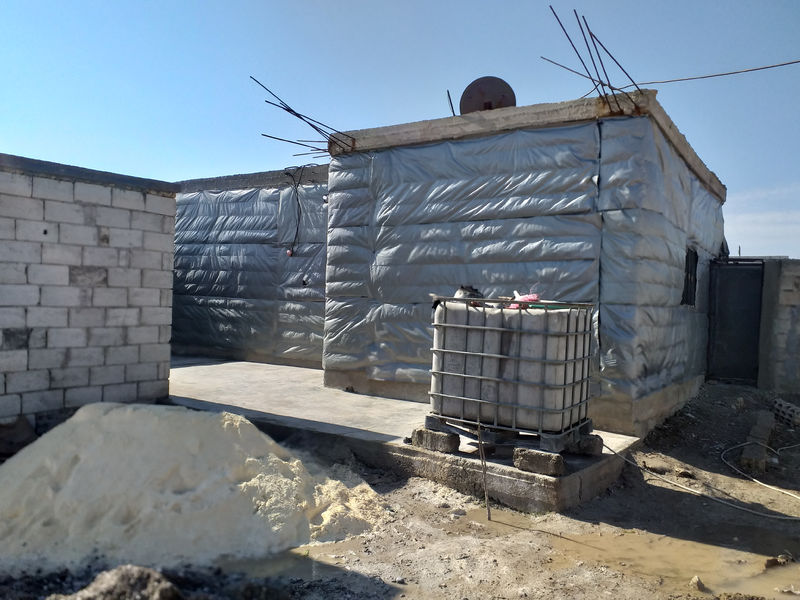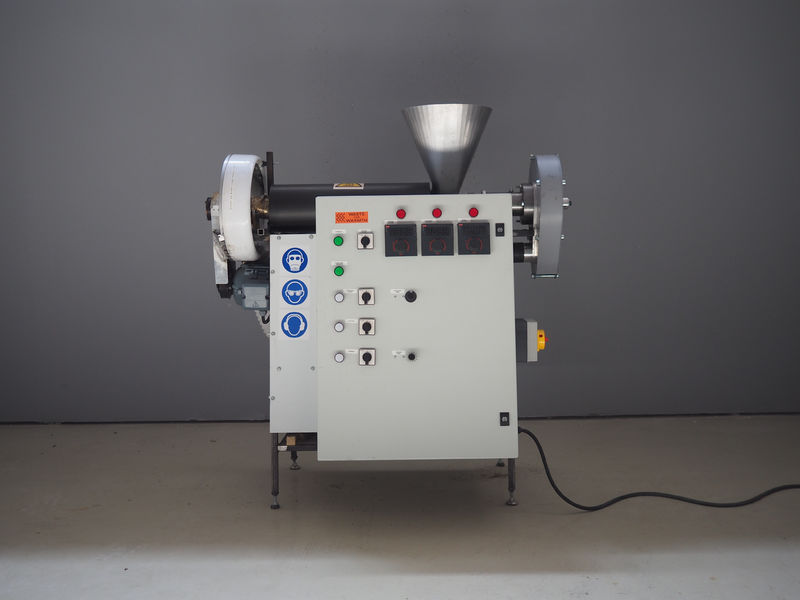Humanitarian Innovation and Norway’s Unique Role
WASTE FOR WARMTH PROJECT
For those not familiar, Waste for Warmth is a humanitarian innovation project that uses plastic as insulation for warm and safe shelters and provides work opportunities for displaced people. The project utilizes a field friendly Polyfloss machine (manufactured by project partner The Polyfloss Factory) that recycles PP and PET waste plastic by heating and spinning the plastic into fine fibers we call “polyfloss.” Polyfloss is a good insulator and Waste for Warmth seeks to utilize the polyfloss in various winterization products. The project has been primarily focused on creating insulation products for the Syrian crisis, specifically in Northwest Syria where over 2.8 displaced Syrians currently live.
HUMANITARIAN FUNDING GAP
One of the biggest challenges that face humanitarian innovation and just plain old humanitarian intervention is a lack of funding. The gap between the funding need in humanitarian response and actual funding grows wider each year. It is difficult to scale an innovative solution in the resource scarce humanitarian field that does not have years of field testing and loads of data points to ease the perceived risk in its adoption in each specific context. It is a potential risk some organizations are unwilling to take, which is understandable, after all, I do not think I would have signed up to buy one of the first Teslas. This is a challenge that will undoubtedly remain as there is so much need and not enough resources to meet those needs. On a positive note, there are a few organizations willing to try something new.
CLUSTER APPROACH
Another challenge, that I am optimistic will be addressed in the coming years, is the cluster approach of the humanitarian field. The cluster approach helps divide humanitarian response into sectors such as Shelter, Early Recovery, WASH, Education, and so on. This approach helps coordinate the response and resources, but innovative solutions and other interventions that address complexity by addressing cross-cutting issues in the humanitarian field face challenges when they span clusters. This is a challenge we have experienced in the Waste for Warmth project. The good news is that there is a growing consensus that the cluster approach must adapt, especially as it responds to the complexity of climate change. Interventions are needed to mitigate the already high risk many displaced people face. Actions that address and respond to the effects of climate change cut across multiple clusters. As the humanitarian field adapts its cluster approach to mitigate climate change risks this will help open space to humanitarian innovation as the climate issue is another force that will drive all of society to innovative solutions.
THE GOOD NEWS
While I know I have spent a bit of time focusing on the challenges, I do feel there is a positive shift already happening in humanitarian innovation. First, donor countries like Norway recognize the need for space and resources in humanitarian innovation and they fund it! Waste for Warmth, and a whole host of other amazing and exciting humanitarian innovations would not be here if it was not for the funding from Innovation Norway’s Humanitarian Innovation Programme. Additionally, a growing number of other donor countries are excited and willing to fund innovative solutions to the complex challenges in the humanitarian field as well. Secondly, research institutions, including universities, and the private sector continue to grow their research and development budgets on innovative solutions that undoubtedly will positively affect all of us in the coming decades. Along with this, is the growth of what are now called “social enterprises” which are private companies with a social or environmental focus creating a positive impact for people and the planet. The exciting part is that I suspect humanitarian innovation will continue to grow and we will see more connections between the private sector and the humanitarian field.
ENGINEERING EXPERTISE: BRIDGING THE GAP
One aspect that is unique to Engineers Without Borders-Norway is our position between the humanitarian and international development sectors and the private sector in Norway. We are lucky to count some amazing Norwegians companies, organizations and institutes among our partners. In addition to the steadfast commitment of these partners, we are also fortunate to have volunteer engineers from a wide array of Norwegian companies who provide their expertise and knowledge to our local partners. Waste for Warmth has benefitted from several volunteer assignments as well as the willingness from those in our network to talk through a challenge or provide their expertise on a question the project faces. I would love to share more details about the positive developments in the Waste for Warmth project. We are now looking for supporters and experts to join our intriguing journey, so if you or your company see a way to support the project, please feel free to get in touch! My inbox is open.
Best regards
Holly
Contact

Holly Mikesell
Project manager
holly
Mobile: 913 39 903




